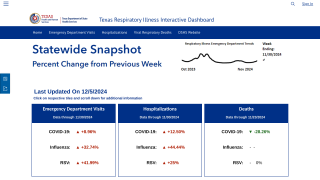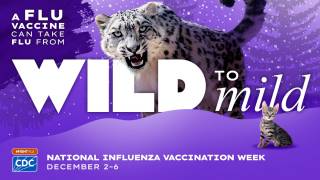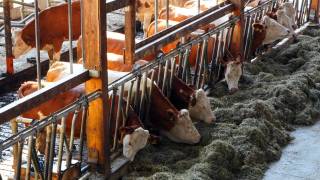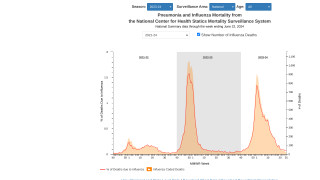Pediatric Influenza Cases Increased Last Week

The US Centers for Disease Control and Prevention (CDC) reported today, the 2020-2021 influenza season has begun to accelerate in the pediatric population.
The CDC confirmed on May 14, 2021, the percentages of provider visits in Week #18 continued to increase for one age group (0–4 years) and remained stable for the remaining age groups compared with Week #17.
About 6% of provider visits for children were related to the seasonal flu.
However, there has not been an increase in influenza-associated pediatric deaths reported to CDC. As of Week #18, one influenza-associated pediatric death has been confirmed during the 2020-2021 flu season.
This is good news when compared with last flu season when 198 influenza-associated pediatric deaths were confirmed.
The CDC continues to recommend the annual flu shot for children older than six months of age. The most common flu shot for the 2020-2021 influenza season in the Northern Hemisphere is quadrivalent vaccines that protect people against four viruses.
Regarding the older populations, the CDC reported an equally positive trend.
The Influenza Hospitalization Surveillance Network (FluSurv-NET) confirmed between October 2020, and April 30, 2021, fourteen US states reported 226 laboratory-confirmed influenza hospitalizations for an overall cumulative hospitalization rate of 0.8 per 100,000 population.
This is lower than rates for any season since systematic data collection began in 2005. Due to low case counts, only overall cumulative influenza rates for the entire FluSurv-NET are reported this season.
Of the 22,487 specimens tested, 22 were found positive (.1%). Influenza B was confirmed in 54.5% of these specimens.
The CDC says ‘many people are accessing the health care system in alternative settings, which may or may not be captured in the data. Therefore, flu activity levels should be interpreted with caution.
It is essential to evaluate syndromic surveillance data in the context of other sources of surveillance data to obtain a complete and accurate picture of both influenza and COVID-19 activity.
The CDC is tracking the COVID-19 pandemic in a weekly publication called COVID Data Tracker Weekly Review.
As the 2021-2022 flu season in the Northern Hemisphere arrives in August, the CDC and the US Food and Drug Administration’s Vaccines and Related Biological Products Advisory Committee (VRBPAC) made the influenza vaccine composition recommendation for the USA.
The 2021–2022 U.S. influenza vaccines' composition includes updates to the influenza A(H1N1)pdm09 and influenza A(H3N2) components.
The VRBPAC vaccine recommendations are based on several factors, including global influenza virologic and epidemiologic surveillance, genetic characterization, antigenic characterization, and the candidate vaccine viruses for production.
An updated listing of available flu shots is posted on this webpage.
PrecisionVaccinations publishes research-based vaccine news.
Our Trust Standards: Medical Advisory Committee
























